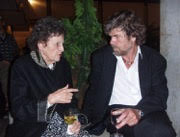Bathroom remodeling can do wonders for your home. It can improve energy efficiency, increase property value, and enhance your overall comfort and convenience. However, traditional bathroom renovations can also be wasteful, harmful to the environment, and unsustainable in the long run. Fortunately, sustainable bathroom remodeling is becoming more popular and accessible nowadays. By using eco-friendly materials and practices, you can create a beautiful, healthy, and environmentally conscious space that meets your needs and values. In this blog post, we’ll explore some of the best sustainable bathroom remodeling options that you can apply to your project.
1. Install low-flow fixtures
One of the easiest and most effective ways to make your bathroom more sustainable is to switch to low-flow plumbing fixtures, such as toilets, showerheads, and faucets. These fixtures use less water without compromising on performance, saving you money on your water bill and reducing your water footprint. You can also install a greywater system that captures and repurposes your sink and shower water for irrigation, thus reducing your impact on municipal water resources.
2. Use recycled and renewable materials
Another key aspect of sustainable bathroom remodeling is to use materials that minimize waste and environmental impact. You can choose from a variety of recycled and renewable materials, such as recycled glass, reclaimed wood, bamboo, cork, and stone. These materials not only look beautiful but also reduce the need for virgin resources, reduce landfill waste, and support ethical and local sourcing.
3. Opt for non-toxic and energy-efficient products
When selecting bathroom products, such as paint, flooring, and lighting, it’s important to choose those that are non-toxic and energy-efficient. For instance, you can use no-VOC paints that don’t emit harmful toxins and pollutants, install LED lights that use less energy and last longer than traditional bulbs, and choose flooring options that are made of sustainably sourced or reclaimed materials.
4. Consider modular and adaptable designs
Sustainable bathroom remodeling also involves creating designs that are flexible and adaptable to changing needs and lifestyles. One way to achieve this is by using modular and prefabricated elements, such as cabinets, shelves, and fittings, that can be easily assembled, disassembled, and rearranged as needed. This approach minimizes waste, enhances versatility, and allows for customizability and personalization.
5. Hire eco-conscious professionals
Last but not least, it’s crucial to work with professionals who share your commitment to sustainability and eco-friendliness. Look for contractors, designers, and architects from iasbuilders.com/ site, who have experience in sustainable remodeling, use eco-friendly materials and equipment, and follow green building standards and certifications. This way, you can ensure that your bathroom renovation is done with the highest standards of quality, safety, and environmental responsibility.
Sustainable bathroom remodeling is a smart and fulfilling way to renovate your home while preserving and protecting the environment. By using low-flow fixtures, recycled and renewable materials, non-toxic and energy-efficient products, modular and adaptable designs, and eco-conscious professionals, you can achieve a bathroom that delights your senses and satisfies your values. So, if you’re planning a bathroom remodel, consider adopting these sustainable and green practices to create a better future for you and the planet.


